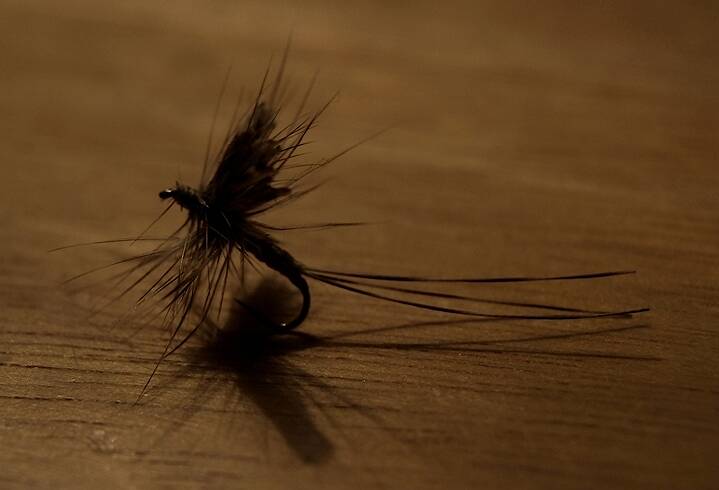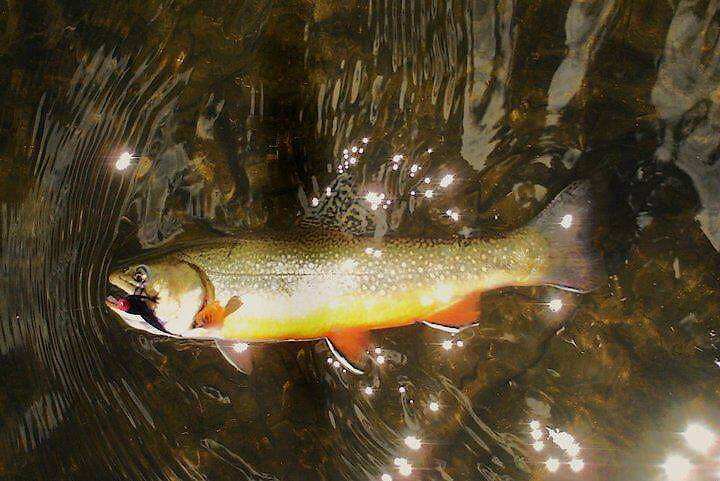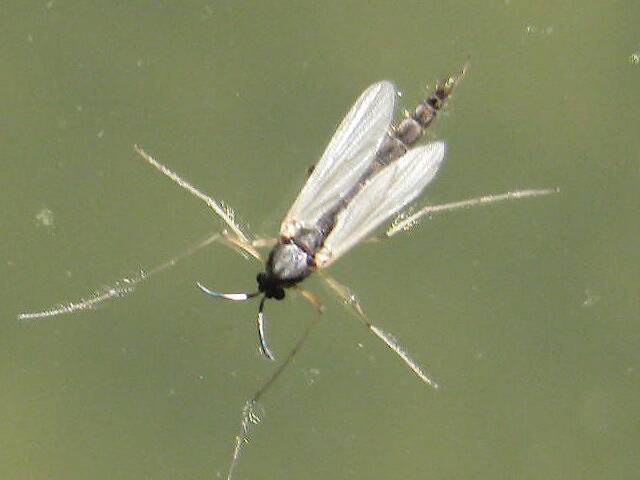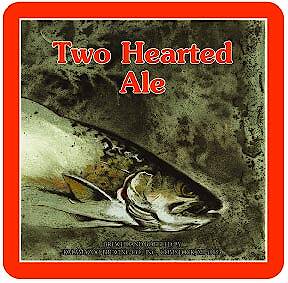
Blue-winged Olives
Baetis
Tiny Baetis mayflies are perhaps the most commonly encountered and imitated by anglers on all American trout streams due to their great abundance, widespread distribution, and trout-friendly emergence habits.
Featured on the forum

Troutnut is a project started in 2003 by salmonid ecologist Jason "Troutnut" Neuswanger to help anglers and
fly tyers unabashedly embrace the entomological side of the sport. Learn more about Troutnut or
support the project for an enhanced experience here.
FisherOfMen on Feb 13, 2012February 13th, 2012, 3:43 am EST
I've done a little searching for posts relating to this and didn't find much but tips in the middle of old threads.
How do you go about casting a heavy fly? When I say heavy, I mean stuff even as light as a wet #4 wooly bugger. I picked up my first bugger on the second to last day of trout season last year, and had some difficulty casting it. I would get to my backcast, and when the fly got to the end of the cast, it would jerk and ruin my casts, at least any farther casts. I've heard of putting an oval in your stroke to maintain constant load on the leader, eliminating this. What exactly does that mean, and doesn't that throw off your "maintaining the same plane" while casting?
Thanks,
Nick
How do you go about casting a heavy fly? When I say heavy, I mean stuff even as light as a wet #4 wooly bugger. I picked up my first bugger on the second to last day of trout season last year, and had some difficulty casting it. I would get to my backcast, and when the fly got to the end of the cast, it would jerk and ruin my casts, at least any farther casts. I've heard of putting an oval in your stroke to maintain constant load on the leader, eliminating this. What exactly does that mean, and doesn't that throw off your "maintaining the same plane" while casting?
Thanks,
Nick
"Nothing makes a fish bigger than almost being caught." -Author Unknown
All that is necessary for the triumph of evil is that good men do nothing. -Edmund Burke
All that is necessary for the triumph of evil is that good men do nothing. -Edmund Burke
Wbranch on Feb 13, 2012February 13th, 2012, 5:09 am EST
What line weight are you using to cast these "heavy" flies? Also what is your leader length?
Catskill fly fisher for fifty-five years.
Martinlf on Feb 13, 2012February 13th, 2012, 1:37 pm EST
Matt's questions are germane, but while we wait for your feedback, I'll venture a general suggestion. For many people whose primary experience has been casting dry flies, the main trick to casting weighted flies is to pause longer on your backcast, until you feel a little tug at the end of your back stroke, then begin your forward stroke. One can cast many, many different ways, using many different planes. One cast some describe as an oval is a standard cast, tipping your rod a bit out to the side on the backcast, pausing, then delivering the forward cast more vertically, using a regular stroke. Some like this for casting weighted flies. I have heard of the oval cast I think you are describing, but have yet to try it. If it's the cast I'm thinking of, I believe the loading of the rod occurs throughout the cast. I think this would be harder to do than what I describe above. If you have learned the standard way most flyfishers cast and are used to a pause at the end of your backcast, try just pausing longer, until you feel the tug of the weighted fly, then make the forward cast. If you apply the right amount of speed and an appropriate stop to your forward cast the fly should go where you aim it. The best help comes from having an experienced caster watch and give you constructive critique as you work on this.
"He spread them a yard and a half. 'And every one that got away is this big.'"
--Fred Chappell
--Fred Chappell
Oldredbarn on Feb 14, 2012February 14th, 2012, 5:48 am EST
If you apply the right amount of speed and an appropriate stop to your forward cast the fly should go where you aim it.
:) Nice stuff Louis...But you forgot to remind him to duck...;)
Spence
"Even when my best efforts fail it's a satisfying challenge, and that, after all, is the essence of fly fishing." -Chauncy Lively
"Envy not the man who lives beside the river, but the man the river flows through." Joseph T Heywood
"Envy not the man who lives beside the river, but the man the river flows through." Joseph T Heywood
PaulRoberts on Feb 14, 2012February 14th, 2012, 11:50 am EST
My first question was the same as WB's. You can't play 18 holes of golf well with one club. I do a lot of nymphing with a 4wt, but 5 is better all around, simply bc the more massive line and added power in the rod will manhandle more weight. By winter, I'm using a 6wt where in summer I used a 4.
But, even with the right line, there is often an adjustment in casting needed. As Louis' suggested, the "Oval Cast" is the way to go (named by Lee Wulff). With it, you can pitch more terminal weight (safely and accurately) per line weight. It also can be embellished at the end for tuck casts and accurate pile casts that help get your weighted nymph down before the leader engages with it.
Most simply, oval casting is bringing the line under the rod on the back-cast, and then over on the fore. Depending on weight, you probably won't be able to put a lot of line in the air like you can with an unweighted fly. So work with less line in the air, oval cast, then shoot what you need. You can move a fair amount of weight, safely and accurately, this way.
The backcast is a strong upward thrust, waiting for the weight to load the rod, then you throw forward and "over the top" of the rod aiming high, and letting the weight carry the rest of the cast out.
I had an article in the Jan/Feb 2003 American Angler about using leadcore heads (incorporated into the leader) called "Core Values" that highlighted the oval cast. I use leadcore heads for streamers and wets on both strong trout streams as well as steelhead waters (where one tends to hear the most about sinking heads). The oval cast, and shooting line, is the ticket. Here's a sketch of the oval cast I sent in with the article for their artist to use:

I also have the illustration the artist did but I'm not sure if it's kosher to post it.
But, even with the right line, there is often an adjustment in casting needed. As Louis' suggested, the "Oval Cast" is the way to go (named by Lee Wulff). With it, you can pitch more terminal weight (safely and accurately) per line weight. It also can be embellished at the end for tuck casts and accurate pile casts that help get your weighted nymph down before the leader engages with it.
Most simply, oval casting is bringing the line under the rod on the back-cast, and then over on the fore. Depending on weight, you probably won't be able to put a lot of line in the air like you can with an unweighted fly. So work with less line in the air, oval cast, then shoot what you need. You can move a fair amount of weight, safely and accurately, this way.
The backcast is a strong upward thrust, waiting for the weight to load the rod, then you throw forward and "over the top" of the rod aiming high, and letting the weight carry the rest of the cast out.
I had an article in the Jan/Feb 2003 American Angler about using leadcore heads (incorporated into the leader) called "Core Values" that highlighted the oval cast. I use leadcore heads for streamers and wets on both strong trout streams as well as steelhead waters (where one tends to hear the most about sinking heads). The oval cast, and shooting line, is the ticket. Here's a sketch of the oval cast I sent in with the article for their artist to use:

I also have the illustration the artist did but I'm not sure if it's kosher to post it.
FisherOfMen on Feb 14, 2012February 14th, 2012, 2:53 pm EST
To answer your question, Matt, I have no idea what weight line I was using. This was on my Crystal River setup that's a 6/7 weight, but the fly line that came with the kit sure doesn't feel like a 6# or a 7#. In fact, my dad's Black Eagle 5# feels like it has heavier line! I think the line was a bit mismatched which might explain some of my casting difficulty. I definitely need to get a new rod for this season! (7 1/2ft. leader)
Thanks, I'll try that cast out. If ice-out on the lake is before the river trout season (April 1) then I'll definitely toss a few streamers for the rainbows!
Nick
Thanks, I'll try that cast out. If ice-out on the lake is before the river trout season (April 1) then I'll definitely toss a few streamers for the rainbows!
Nick
"Nothing makes a fish bigger than almost being caught." -Author Unknown
All that is necessary for the triumph of evil is that good men do nothing. -Edmund Burke
All that is necessary for the triumph of evil is that good men do nothing. -Edmund Burke
Wbranch on Feb 15, 2012February 15th, 2012, 12:38 pm EST
Nick,
Light lines, #3 - #4, and even a #5 just weren't designed to cast big and bulky air resistant streamers very well. Sometimes I'll be out on the river with my 9' #4 Gatti and want to fish a streamer. I fish big Clousers in the #4 - #1 ranges. I know my #4 is a poor choice but when throwing a big fly on a line line if you really slow down your casting stroke so it is almost like slow motion you will still be able to throw the fly a respectable distance and maybe even catch a trout or two. Don't be out there false casting over and over like I see so many guys doing. False casting more than one or twice is unecessary when wet fly or streamer fishing. Your line weight, and rod action, and of course your skill, are the determining factors in how far you are going to be able to cast. What I do is strip off maybe 50' of fly line and just let it float down in the current, then get the line in the air and make one foward cast to get maybe 20' of line in the air, execute one haul on the back cast and another on the foward cast (you need to Google "Double Haul" or go to Youtube and see if there are any Double Haul casting tutorials) and shoot the line another 30' so now your out there 50 feet. Also you want to be using a robust leader, one with at least a .021" butt diameter and preferably one that is .023" or even .025". Also a streamer leader need not, should not, be any longer than 7 1/2'. When the river is dirty and I'm using a #7 rod and a sink tip line I often just tie on a piece of 15# flurocarbon about 15" - 24" long and that is my leader. Even when the river is clear I never, ever, use a long leader. Believe me big trout don't give a damn about the diameter of your leader! You will be pulling the fly away from the trout. It is not like they are rising and are spooky and you need to make a delicate presentation. Most of the time I'm throwing streamers in the early morning or evening when big trout are on the feed for meat and more apt to be very aggressive. I never use less that 13# tippet and often go as high as 17# or 20#. Thicker leaders will turn over heavy flies a zillion times better than a normal 9' 3X or 4X leader. Plus since you will be pulling the fly away from the fish they often strike very hard - ligt tippets break but heavy ones don't.
Light lines, #3 - #4, and even a #5 just weren't designed to cast big and bulky air resistant streamers very well. Sometimes I'll be out on the river with my 9' #4 Gatti and want to fish a streamer. I fish big Clousers in the #4 - #1 ranges. I know my #4 is a poor choice but when throwing a big fly on a line line if you really slow down your casting stroke so it is almost like slow motion you will still be able to throw the fly a respectable distance and maybe even catch a trout or two. Don't be out there false casting over and over like I see so many guys doing. False casting more than one or twice is unecessary when wet fly or streamer fishing. Your line weight, and rod action, and of course your skill, are the determining factors in how far you are going to be able to cast. What I do is strip off maybe 50' of fly line and just let it float down in the current, then get the line in the air and make one foward cast to get maybe 20' of line in the air, execute one haul on the back cast and another on the foward cast (you need to Google "Double Haul" or go to Youtube and see if there are any Double Haul casting tutorials) and shoot the line another 30' so now your out there 50 feet. Also you want to be using a robust leader, one with at least a .021" butt diameter and preferably one that is .023" or even .025". Also a streamer leader need not, should not, be any longer than 7 1/2'. When the river is dirty and I'm using a #7 rod and a sink tip line I often just tie on a piece of 15# flurocarbon about 15" - 24" long and that is my leader. Even when the river is clear I never, ever, use a long leader. Believe me big trout don't give a damn about the diameter of your leader! You will be pulling the fly away from the trout. It is not like they are rising and are spooky and you need to make a delicate presentation. Most of the time I'm throwing streamers in the early morning or evening when big trout are on the feed for meat and more apt to be very aggressive. I never use less that 13# tippet and often go as high as 17# or 20#. Thicker leaders will turn over heavy flies a zillion times better than a normal 9' 3X or 4X leader. Plus since you will be pulling the fly away from the fish they often strike very hard - ligt tippets break but heavy ones don't.
Catskill fly fisher for fifty-five years.
FishThirty on Feb 15, 2012February 15th, 2012, 1:14 pm EST
I was fishing the White River in Arkansas with my 4wt, we did very well on size 16-20 midges on really light flouro. The water was gin clear. Long story short, there came a time when I wanted to throw something big and ugly with my inadequate gear. After a while I started to develop a sort of figure 8 to my cast. Really just a way to avoid the heavy jerk at the end of the stroke. Instead of letting the line extend all the way back, I would add a little swing just before tight in order to have the heavy fly take less shock. Weird little cast but it worked for me that day.
These guys hit it spot on though, shorten the leader, use the current to your advantage to start a cast. You can get allot of line in the air doing what WBranch suggested. Its definitely all about finding a way to lessen the shock involved at the end of your stroke. You have to "feather" it... Also just to state the obvious, make shorter casts when in doubt, shorten up and be thorough. And yes, during experimentation, DUCK!
These guys hit it spot on though, shorten the leader, use the current to your advantage to start a cast. You can get allot of line in the air doing what WBranch suggested. Its definitely all about finding a way to lessen the shock involved at the end of your stroke. You have to "feather" it... Also just to state the obvious, make shorter casts when in doubt, shorten up and be thorough. And yes, during experimentation, DUCK!
"What time is it? It's FISH THIRTY!"
Falsifly on Feb 15, 2012February 15th, 2012, 1:39 pm EST
Great post Matt, I have found everything you said to be true from my experience with the big streamers and the like.
Question:
My brother is a long time rod builder and I have heard him mention Gatti blanks with some praise. What is your opinion?
Question:
My brother is a long time rod builder and I have heard him mention Gatti blanks with some praise. What is your opinion?
Falsifly
When asked what I just caught that monster on I showed him. He put on his magnifiers and said, "I can't believe they can see that."
When asked what I just caught that monster on I showed him. He put on his magnifiers and said, "I can't believe they can see that."
Wbranch on Feb 15, 2012February 15th, 2012, 2:13 pm EST
Hello Falsify,
"I have heard him mention Gatti blanks with some praise. What is your opinion?"
Well for about five years I was a Gatti dealer, and builder, of custom fly rods built on Gatti blanks. I really like them a lot and my rod array depicts that enjoyment.
- 8' #5 2 pc - custom rod
- 8 1/2' #4 3 pc - custom rod
- 8 1/2' #5 3 pc - custom rod
- 9' #4 3 pc - factory rod
- 9' #5 3 pc - custom rod
- 9' #5 2 pc - custom rod
- 9' #6 3 pc - custom rod
- 9' #6 2 pc - factory rod
- 9' #7 2 pc - factory rod
- 10 #8 3 pc - factory rod
I had another 9' #6 and a 9' #3 but I sold them as I have enough #6's and have two other #3's. I think there is one or two more but can't remember for sure.
I have more Gatti's than any other rod. Obviously part of it was because I was getting new rods for dealers pricing. I also had a business license and was able to buy cork, guides, reel seats, whatever at wholesale. But I just love the lightness and fastness of even the 3 piece rods. I've had these before 4 piece rods really took hold on the fly rod market. But they still easily fit in the overhead of most any plane. If I know I'm going on a really small plane I'll throw three 4 pc rods in a rod carrier and they will fit under the seat.
There was a time when the Euro had less value than the dollar so they were really a great deal for the investment. I've not looked at the conversion rate lately but the last time I looked it was no longer a deal. There is one aspect of the rod that can cause an issue if you are unaware of it and that is the wall thickness of the graphite is less than a comparable US made rod. As long as you are fighting a fish with the full arc of the rod working you are fine but there have been three episodes where I forgot about that or was in a situation where the rod was more near the vertical and only about the top 18" was bending and "SNAP" the rod broke - it is the same as if you take a slim branch and bend it in a full flowing hoop shape. It takes a lot to get to the point where it breaks but if you take that same thin branch and try bending just the top 1/4 it is going to break much sooner. I'm aware of this and have not broken a tip in over seven years.
"I have heard him mention Gatti blanks with some praise. What is your opinion?"
Well for about five years I was a Gatti dealer, and builder, of custom fly rods built on Gatti blanks. I really like them a lot and my rod array depicts that enjoyment.
- 8' #5 2 pc - custom rod
- 8 1/2' #4 3 pc - custom rod
- 8 1/2' #5 3 pc - custom rod
- 9' #4 3 pc - factory rod
- 9' #5 3 pc - custom rod
- 9' #5 2 pc - custom rod
- 9' #6 3 pc - custom rod
- 9' #6 2 pc - factory rod
- 9' #7 2 pc - factory rod
- 10 #8 3 pc - factory rod
I had another 9' #6 and a 9' #3 but I sold them as I have enough #6's and have two other #3's. I think there is one or two more but can't remember for sure.
I have more Gatti's than any other rod. Obviously part of it was because I was getting new rods for dealers pricing. I also had a business license and was able to buy cork, guides, reel seats, whatever at wholesale. But I just love the lightness and fastness of even the 3 piece rods. I've had these before 4 piece rods really took hold on the fly rod market. But they still easily fit in the overhead of most any plane. If I know I'm going on a really small plane I'll throw three 4 pc rods in a rod carrier and they will fit under the seat.
There was a time when the Euro had less value than the dollar so they were really a great deal for the investment. I've not looked at the conversion rate lately but the last time I looked it was no longer a deal. There is one aspect of the rod that can cause an issue if you are unaware of it and that is the wall thickness of the graphite is less than a comparable US made rod. As long as you are fighting a fish with the full arc of the rod working you are fine but there have been three episodes where I forgot about that or was in a situation where the rod was more near the vertical and only about the top 18" was bending and "SNAP" the rod broke - it is the same as if you take a slim branch and bend it in a full flowing hoop shape. It takes a lot to get to the point where it breaks but if you take that same thin branch and try bending just the top 1/4 it is going to break much sooner. I'm aware of this and have not broken a tip in over seven years.
Catskill fly fisher for fifty-five years.
Falsifly on Feb 15, 2012February 15th, 2012, 2:58 pm EST
Thanks Matt, and from the looks of it I'd say you've gotta lotta Gatti.
Falsifly
When asked what I just caught that monster on I showed him. He put on his magnifiers and said, "I can't believe they can see that."
When asked what I just caught that monster on I showed him. He put on his magnifiers and said, "I can't believe they can see that."
FisherOfMen on Feb 15, 2012February 15th, 2012, 4:48 pm EST
Now I can't wait to use some streamers!
"Nothing makes a fish bigger than almost being caught." -Author Unknown
All that is necessary for the triumph of evil is that good men do nothing. -Edmund Burke
All that is necessary for the triumph of evil is that good men do nothing. -Edmund Burke
Keystoner on Feb 28, 2012February 28th, 2012, 7:18 am EST
The "jerk" you refer to in the original post can be alleviated by moving your rod hand back slightly (3-4") as the backcast straightens. It's a two part movement, backcast, STOP, then give those extra inches. The time between the the STOP and the extra will obviously vary dependant upon the length of line you have in the air, and the time it takes that line to straigten. Just something to play with.
"Out into the cool of the evening, strolls the Pretender. He knows that all his hopes and dreams, begin and end there." -JB
PaulRoberts on Feb 28, 2012February 28th, 2012, 9:27 am EST
There shouldn't be a "jerk" but instead a "tug" that is absorbed smoothly by keeping tension throughout. Which is what an "Oval Cast" (kept short) can do for you. You then shoot for distance. If you are feeling a "jerk" you are not accelerating smoothly, but doing the jerking, or trying to yank around more weight than your line can handle.
What fishthirty is describing sounds like it accomplishes what the oval cast does -smoothing the transmission of force down that light line.
What fishthirty is describing sounds like it accomplishes what the oval cast does -smoothing the transmission of force down that light line.
Quick Reply
Related Discussions
Topic
Replies
Last Reply
2
May 17, 2018
by Subway
by Subway










